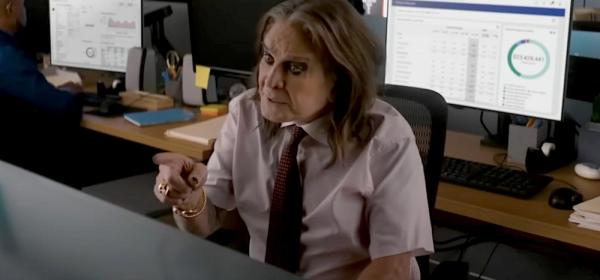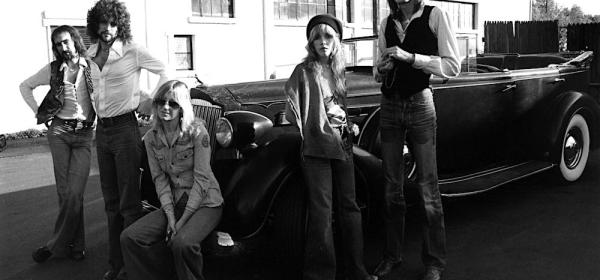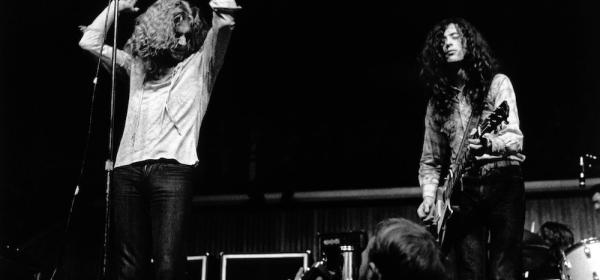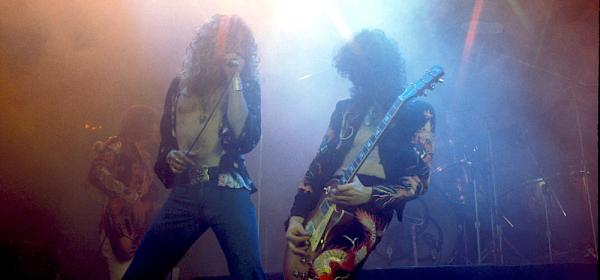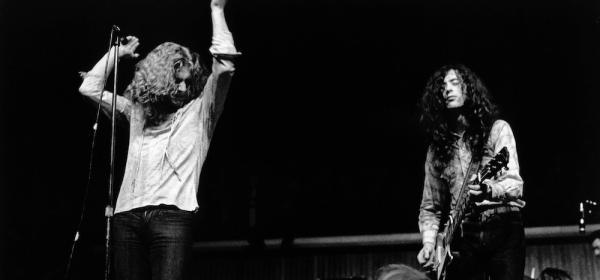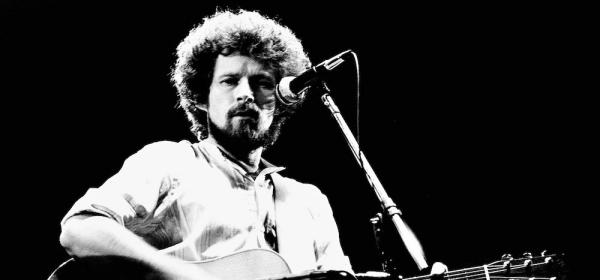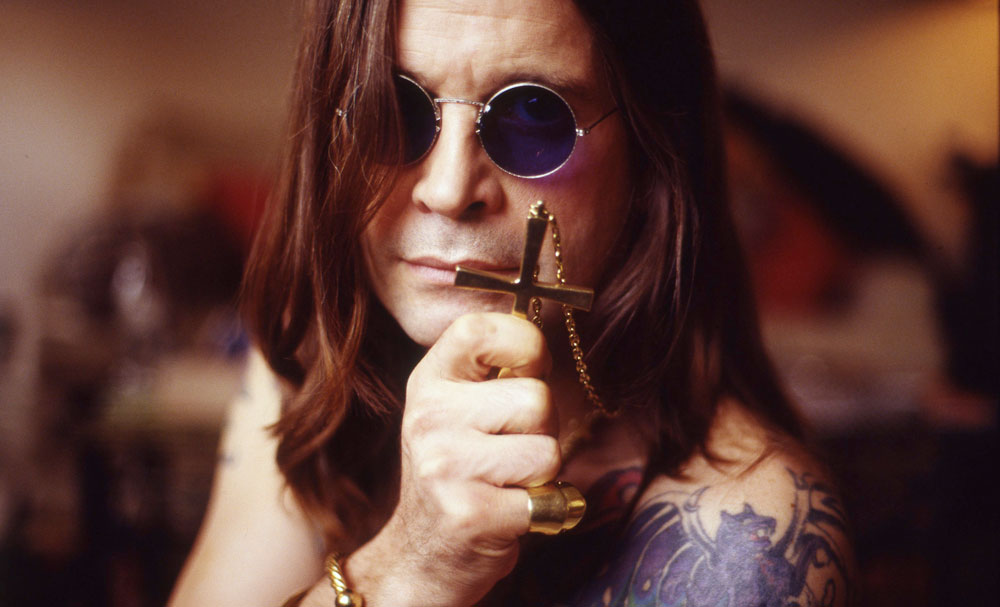
Our lives are so intrinsically soundtracked by beloved artists, it's easy to fall into the misconception these rock heroes will live forever. As the losses of greats such as David Bowie, Prince, Tom Petty and Chris Cornell have proven in the past five years, our favourite stars are as mortal as the rest of us.
Here are 12 of the industry's biggest names who continue to perform after surviving their own brushes with death.
Ozzy Osbourne
He’s had his fair share of close calls with the Grim Reaper over the years, but its Ozzy Osbourne’s near-fatal four-wheeler crash that stands out. In 1993, with wife Sharon dealing with cancer, Ozzy decided a cruise around his Buckinghamshire estate on a quad bike would be a nice way to relax, only for the bike to flip and leave him with severe injuries. Suffering a broken collarbone, eight fractured ribs and damaged neck vertebrae, Osbourne was placed in a coma for eight days at Wexham Park Hospital while emergency surgery could be conducted. "My ribcage is still full of screws and bolts and metal rods,” Ozzy stated in his 2009 autobiography, I Am Ozzy. “When I walk through an airport metal detector these days, a klaxon goes off in the Pentagon.” The near-death experience kept the Prince Of Darkness off the touring circuit for more than 18 months, with 2006’s Ozzfest dates across the US his first full shows following the bike prang.
Phil Collins
Suffering numb fingers during a Genesis reunion tour in 2007, ‘80s chart stalwart Phil Collins went to medical specialists for a diagnosis of his issue. A radiologist noted that his spinal vertebrae were “in terrible condition” and “paralysis and a wheelchair” were on the cards without immediate surgery. Screws affixed to his deteriorating spine fail to fix the numbness, with Collins undergoing two more operations in 2008 to deal with nerve problems in his left arm. Let’s hope he has good health insurance: in the ensuing years Collins ended up in hospital for follow-up back surgery, as well as head injuries after falling down his stairs and fracturing his foot in a fall. “It seems bits are falling off me,” he mused in his 2016 autobiography Not Dead Yet. While his movements remain limited, Phil’s 2017 return to live performance was critically acclaimed. His son Nicholas now sits at the drummer stool his dad so expertly filled throughout the ‘70s, ‘80s and ‘90s.
David Crosby
David Crosby, who featured the aforementioned Phil Collins on his 1993 solo album Thousand Roads, was rushed to hospital after a 1994 gig and diagnosed with hepatitis C. The former Byrds and Crosby, Stills, Nash & Young star simultaneously learnt his liver was functioning at 20 percent of its capacity, expediting a transplant after years of hard living. In a noble gesture, Crosby’s collaborator Collins paid for the surgery. Crosby acknowledged the wonderful gift by saying Collins “loves me… it was incredibly kind of him to do it”. While Crosby’s health has since been patchy thanks to diabetes and heart issues, in the wake of his transplant he was able to go on the road with Stephen Stills, Graham Nash and Neil Young in 2000 – their first tour in 25 years.
Robert Plant
After a famed run of Led Zeppelin gigs at London’s Earl’s Court in 1975, frontman Robert Plant opted for a holiday in Rhodes with his family. A horrific car crash resulted in his wife Maureen almost dying, while Plant, who had been driving the hire vehicle, also broke bones. Tour dates in support of the Physical Graffiti album were cancelled and the recording of follow-up album Presence was stalled as Plant recuperated in a wheelchair. The frontman eventually made a live return on Zeppelin’s biggest ever tour, a 1977 run of dates in the US. It was to be the band’s final Stateside shows before they split in 1980, although Plant continues to perform well-received shows as a solo artist. Even so, Benji Lefevre, a Zeppelin staff member who travelled to Rhodes to assist the family in the wake of the 1975 accident, recalled in Barney Hoskyns’ Trampled Under Foot Led Zep biography the crash had lasting effects: Robert “can’t move his arm completely to this day”.
John McVie
In 2013, Fleetwood Mac’s Australian tour was cancelled after it was announced bassist John McVie was being treated for colon cancer. Within a year his condition had improved enough for him to return to the road with the Mac in 2014, with the stoic, reliable and softly-spoken McVie being given the cancer all-clear in 2017 – just in time to celebrate 50 years as the bassist with the iconic group.
Johnny Rotten
In his autobiography Anger Is An Energy: My Life Uncensored, the Sex Pistols and Public Image Limited frontman talks in detail about how childhood meningitis shaped the man he became. The disease, he says, “came from the rats. They were all over the place” and left him “in a total coma for six or seven months”. Another half a year of recovery in Whittington Hospital saw Rotten endure regular spinal column draining, which gave him a lifelong fear of needles. When he was finally able to go home, he was suffering acute memory loss, bad eyesight and a jaded perspective that he’d soon make an artform: a decade later, he was fronting punk music’s most visible force.
Neil Young
Neil Young is another future recalcitrant rock hero who almost died during childhood. Growing up in rural Ontario, Canada in the 1950s, Young contracted polio as a five-year-old and was rushed to hospital. While Neil remembers little of the traumatic experience, his older brother Bob Young recalled in Neil’s Waging Heavy Peace autobiography, “It was a very serious situation. It was obvious his life was on the line.” During Neil’s recovery a quarantine sign was placed in front of the Youngs’ home, warning the public not to enter due to ‘poliomyelitis’ on the premises. Even after his recovery, Young experienced bouts of pain as a result of the polio, even wearing back braces during gigs. He’s since suffered from diabetes, epilepsy and, in 2005, a brain aneurysm, yet he remains a prolific musician: he’s recently been seen performing online ‘Fireside Sessions’ during the COVID-19 epidemic.
Bruce Dickinson
As detailed in his autobiography What Does This Button Do?, Iron Maiden’s energetic frontman Bruce Dickinson self-diagnosed his cancer after consulting the internet. The ‘human air raid siren’ was treated for cancer of the tongue and lymph nodes in 2015, but proved his resilience by being back on the road within a year, visiting Australia in May 2016 as part of Iron Maiden’s impressive The Book Of Souls World Tour.
Rick Allen
New Year’s Eve 1984 will live in infamy for Def Leppard and their fans. Racing another driver down the A57 between Sheffield and Derbyshire, Def Lep drummer Rick Allen flipped his Corvette Stingray through a stone wall, with his left arm ripped off in the high speed incident. It was reattached in surgery, however infection caused it to be removed again just three days later. Showing ingenuity and unflagging determination, by mid-1985 a one-armed Allen was using a Fairlight synthesiser, a custom-built Simmons electronic drumkit and an SD57 computer to store his drum sounds. Allen made his miraculous return to big stages at Castle Donington’s famous Monsters Of Rock festival in 1986, with the determined percussionist remaining a staple of Def Leppard albums and gigs ever since.
Nile Rodgers
Nile Rodgers, the man who shaped disco in Chic before producing 1980s hits for David Bowie, INXS, Duran Duran and Madonna, was diagnosed with prostate cancer in 2010, around the time he was putting the finishing touches to his autobiography Le Freak. Rodgers suffered a setback when cancer was also found on his right kidney in 2017, however he announced last year he is now “100 percent cancer-free”. His cancer treatments had barely slowed the guitarist down, with an ongoing role as Abbey Road Studios’ Chief Creative Advisor and diary-filling commitments with Chic’s glorious live incarnation ensuring Rodgers is more beloved than ever.
Keith Richards
When the world heard Keith Richards had suffered serious injuries in 1998 after falling from a ladder in his Connecticut home’s library, we all suffered momentary shock: who could believe rock’n’roll’s immortal hellraiser had a library?!? The rib injuries stalled The Rolling Stones’ 1998 European tour dates, but worse was to come for the iconic guitarist. In 2006, while climbing a Fijian palm tree with fellow Stone Ronnie Wood, Richards hit the ground and suffered a brain haemorrhage. The injury again postponed Stones tour dates, but since then it seems Keef has stayed away from ladders and palm trees and been in fairly rude health. While Coronavirus has postponed the band’s 2020 tour dates, The Rolling Stones have been actively finalising their first album of new material since 2005’s A Bigger Bang.
Bono
What’s more embarrassing for your average rock star than falling off a ladder? How about taking a tumble off a bicycle in New York’s Central Park and breaking multiple bones. In 2014, while on the promotional trail for U2’s unloved Songs Of Innocence album, frontman Bono had a massive bike spill which left him requiring five hours of surgery and the insertion of metal plates. The serious injuries included eye socket fractures, a compound fracture to his arm and several breaks in his shoulder blade. In Rolling Stone in 2017, Bono admitted the Central Park incident was exacerbated by an unspecified health scare where he experienced a “major brush with mortality”. Thankfully, his full recovery meant Australia was able to belatedly enjoy U2’s The Joshua Tree tour in 2019. Best to stick to peddling classics rather than pedalling bicycles, old mate.


